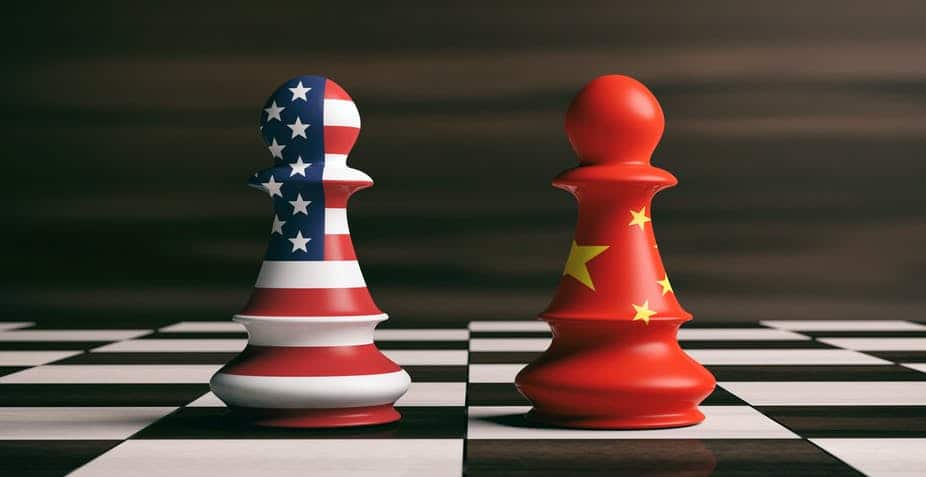

Dr. S. M. Alatas is a Malaysian academic with a passion for decolonizing international relations. She can be reached at peanutminat@gmail.com.
25 March 2021
Currently, big powers in the geographic West, mainly the US, Britain and France feel that they are up against an aggressive non-Western power, China. Western leaders regularly portray China as a belligerent security threat and a danger to the rules-based world order.
The recent March 18 meeting in Anchorage, Alaska between the US and China can be perceived as a balance of power strategy by both, which could potentially result in war. However, it can also be seen as a condition of peace, or rather an effort to maintain the status quo, where both sides maintain a high level of verbal aggression, falling short of declaring war.
Till today, we have yet to read or hear of any Western leader who likens China’s combined military build-up to Adolf Hitler’s expansion that triggered the devastation of World War II. The commentaries that emerged after the Anchorage meeting perpetuate a damning view of world order, framed in mischievous rhetoric. Many nations of the developing world see such polemics as counter productive.
Narratives have continued to focus on China’s naval strengths and belligerent strategies in the Indo-Pacific, with special attention to Taiwan, the “nine-dash” line, the disputed territorial claims in the South China Sea and the “peril” faced by smaller nations in Southeast Asia.
Also, the language of threat used against China till recently has focused predominantly on the economic dimension. The South China Sea security complexities add increasingly to the discourse of disrupted global trade and the difficulties encountered by ocean-going vessels across the globe. Recently, however, the narrative has shifted slightly.
At the March 11 2021 annual meeting of China’s National People’s Congress (NPC), President Xi Jinping mentioned that China’s military development was at a “good start” in terms of combat readiness. The NPC is a high-profile stage for major policy announcements and long-term development plans. The key takeaways of the NPC focused on a 5-year economic development blueprint, continued cooperation with the World Health Organization to control the Covid-19 pandemic and electoral reforms for Hong Kong.
Even though this is not seen by most nations as a deliberate and calculated hint at actual military threat, the director of the US Army Futures Command’s Next-Generation Combat Vehicle Cross-Function Team, Maj. Gen. Richard Coffman quickly warned of the possibility of China “using every arrow in their quiver”. The message is that now the world should watch out for both China’s naval and land aggression, adding an army and naval “threat” to the existing lexicon of economic, technological and financial aggression.
The facts reveal that China’s planned defense expenditure for 2021 would be about $140 per capita, for a population of about 1.4 billion. In sharp contrast, the defense budget of the United States for the 2021 fiscal year is $740.5 billion, or $2230 per capita, fifteen times that of China’s. Also, we need to look at the reality on the ground.
While the US is much stronger than China in military terms, in practice the gap is indeed quite narrow. The US takes approximately 10 years to produce 1 aircraft carrier. For the Chinese, the average is about 3 years. The US had fought the Taliban in Afghanistan for 19 years. Though the US-led coalition managed to dislodge the Taliban government in Kabul days after the 2001 attack, it never seized control of the country. Despite these discrepancies, China’s record of military engagements on foreign soil pale in comparison to America’s.
Furthermore, the US effectively lost the war in Afghanistan, but most media narratives report it as the US “retreating in the interest of peace”. While US withdrawal does help in establishing peace and closure for the people of Afghanistan, it would help if narratives about the world’s superpower are projected in a less disengaging fashion. This should include mainstream commentaries about the human tragedy of waging a losing war, that America and her allies are responsible for to a large extent.
An admission of defeat does not demonstrate weakness; it projects dignity alongside the benevolent attempt at compromise and peaceful co-existence. The world could do with more humble narratives rather than tough-talking bullying that both the US and China seem to relish.
Media and scholarly narratives are used strategically in geopolitics. A New York Times report released in October 2020 concluded that antitrust agencies of various countries around the world were investigating the big four US tech companies, Amazon, Google, Facebook and Apple for their monopolistic policies. Media around the world, however, carefully conditioned the narratives, with no reference to “rising US threat” or “throwing the international system off balance”.
In so many ways, monopolies are detrimental to the world economy. However, western powers focus strategically on China’s Belt and Road Initiative (BRI), painting her as hypocritical due to China’s financing of 70% of coal-fired plants around the world. Conversely, there is a growing sense of urgency in countries of the Global South, to scrutinize the anti-competitive conduct of US big tech companies as well.
Labeling Huawei Technologies and 5G technology as “threats to national security” is only half of the problem facing the developing world, which incidentally make up the majority of countries on this planet. Amazon, Google, Facebook and Apple have similar monopolistic strategies that aim to dominate and set the world off balance as well.
The problem with current media and academic commentaries on US-China tensions is the use of hegemonic and unforgiving language. For example, in the South China Sea narratives, phrases such as “Malaysia is too weak to confront China” or “the ASEAN secretariat is simply a talk shop and impractical” dismiss other achievements worthy of recognition. Worth noting is the fact that ASEAN is not bound by treaty agreements on security matters. This is their strength. Furthermore, China appreciates the fact that Southeast Asian nations prefer to negotiate on a bi-lateral level as opposed to the more lumbering and legalistic negotiation en bloc. The system has worked for decades.
The fact that 4 ASEAN nations have problems with China concerning overlapping claims is not new. Individual ASEAN nations also have sovereignty issues among themselves. So far, though, no nation in the region has resorted to bombing their adversaries into oblivion. The South China Sea may be a new US-China battleground but it is premised on an old American strategy, namely its quest for global supremacy, and to subdue any challenge to its economic, military and geopolitical supremacy. The Global South hopes that the narratives emanating from Western sources will be less aggressive and domineering in tone.
So far, no power can challenge the mighty US military arsenal in the 21st century. China remains a close second. The path towards stability is to ease up on hegemonic narratives that continue to divide, dominate and assert unilateralism. One way would be for the US and China to use less provocative words like “coercive” and “unfair” in their diplomatic meetings. It would also help if the US could relax the trade embargo against both Iran and Cuba, two foreign policy reversals that President Biden alluded to in his critique of Donald Trump’s foreign policy in 2020. This way, the world can hope for friendlier dialogue between the two formidable powers.
It would also send a message to China and the rest of the world that the new Biden administration is serious about peace and genuinely dedicated to co-existence. For the sake of the rest of the world, big powers must learn how to win over the hearts and minds of those who believe in different ideologies, rather than resorting to condescending lexicon and bullying military language.
Disclaimer: The views expressed in the article are of the author and do not necessarily represent the institute’s policy.
